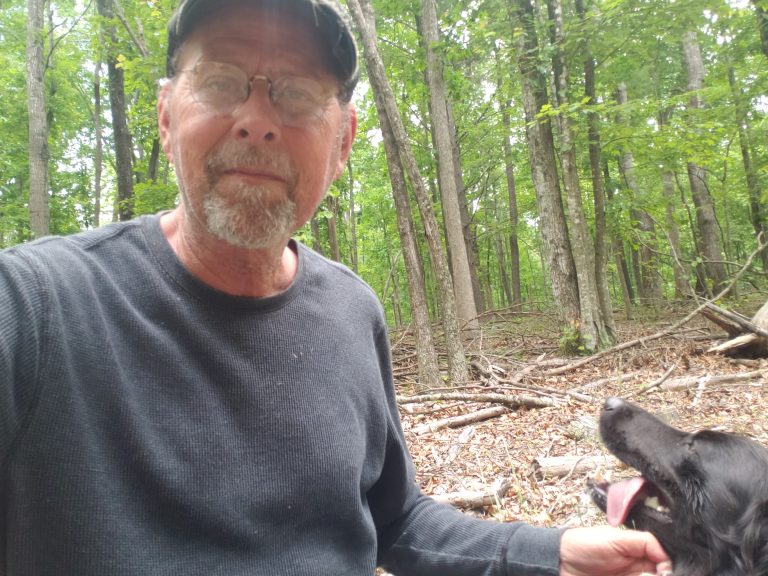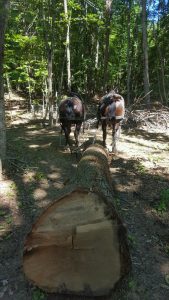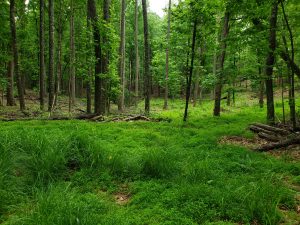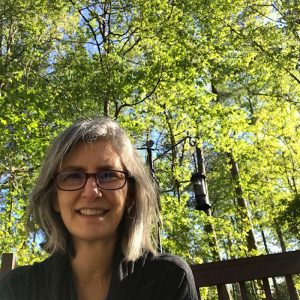
Moving logs requires horsepower, but some landowners prefer to use the kind that runs on oats.

That’s Steve Tipsword’s strategy for his 72 acres in Rockbridge County. “I settled on horse logging from the start,” he says. “I tried it as an experiment on a property I owned in Gordonsville. What struck me was that the season after you finish, you can walk through the forest and see the forest floor intact, with healthy trees all around and new seedlings growing.”
The age-old practice of using draft horses to haul logs out of dense forest stands has gotten renewed interest in the 21st century, as many landowners seek to manage smaller forested properties for their aesthetic and wildlife benefits.
Tipsword has employed horse logging on two different areas of his property: one stand that needed thinning for wildlife management, and another area that he had clear-cut in order to build a house.
“I was lucky enough to find a guy in Eagle Rock who has two Percherons he had raised from colts,” he says. “He would go in one day and cut down 15 trees and limb them up, and then it would take another day for the horses to haul the logs away.”
Before he had the area thinned, Tipsword says that the forest canopy was so thick that nothing was growing underneath. This meant there was nothing for wildlife to forage. “The trees were really mature, so there were no new seedlings underneath, no deer, no turkeys. After the thinning, with new stuff coming up, they all came back.”

Tipsword protected the property with a Virginia Outdoors Foundation easement in 2013. “I had done some studying and liked the idea,” he says. “I had put it together from 3 different parcels, and I didn’t like thinking of it going to someone else and them making 23 pieces out of it. The tax credits were icing on the cake.”
The no-division easement protects water quality in Broad Creek by requiring a 35-foot buffer along the bank that borders the property. It also protects the view from the nearby Buffalo Creek/Purgatory Mountain Special Project Area with a restricted building setback that extends farther out from the creek.
There was still a large portion of the property where he could build a house, but in choosing the site, Tipsword was careful to connect with the natural processes of the forest. “I had 14 or 15 acres with extremely mature poplars. They were getting too old to selectively take out.” He clear-cut that area for his house, again using horses to do the hauling.
Tipsword does rely on one motorized tool to maintain his land: He uses a bush hog and tractor to control invasives along water and forest edges on the property. “It’s an ongoing battle,” he states. “Autumn olive pops up on just about any cleared edge. But if I can bush hog it, it shatters. The roots are destroyed and it won’t come back.”
He says he’ll use horses again when it’s time to thin other forested areas on the property, for their light impact on the land and the benefits to water and soil quality. Less land disturbance means less run-off to Broad Creek, which ultimately drains into the James River.
“If you treat the land well,” he says, “everybody wins.”
